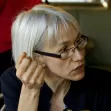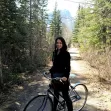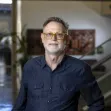The Daily Source of Urban Planning News
BLOG POST
Vancouver Olympics a Living Laboratory for Urbanism!
<p> Among the countless stories being written on the successes and challenges of these 2010 Olympic Winter Games, not surprisingly the most interesting stories to me are those that speak to the challenges of great urbanism. As a host city, Vancouver has become a massive urban laboratory, with so many opportunities to learn, and we’re soaking it all up.<br /> <br /> As we are coming to the end of the final week, a few examples of big experiments and learnings come to mind.<br />
Nail in the Coffin for Hummer
After a last-ditch attempt to sell the Hummer brand to a Chinese company fell through, GM has declared it will shut it down.
A Win for WalMart
A pro-smart growth group in Lockport, NY attempted to stop a WalMart Supercenter from being built in their town, but the state supreme court rejected their appeal.
Smart Growth On The Hill
HUD, DOT and EPA have pulled together under the Obama administration's direction to create sustainable communities, and Sen. Chris Dodd is trying to make it official with a new office under HUD. But can smart growth policies survive the politics?
Parks on Top of L.A. Freeways
Los Angeles is crazy for "cap parks": basically, putting roofs over sections of freeway and building a park on top. The added benefit? Reconnecting neighborhoods riven asunder by the freeway in the first place.
Are Cities Being Sold off to the "Shadow Elite"?
Facing enormous budget shortfalls created in part by the recession, mayors and governors are increasingly turning to the sale of public assets - often to the very Wall Street businesses that helped fuel the crash, writes Donald Cohen.
Detroit's $20 Million Demolition Plan
The city of Detroit has enough money to tear down between one-quarter and one-third of the city's 10,000 abandoned houses.
Interview With 'Sustainability Czar' Shelley Poticha
OK, there is no such czar, but now that Office of Sustainable Housing and Communities is established, why not be creative? Poticha is former CEO of Reconnecting America, and before that, Congress for the New Urbanism.
The Biggest Misconceptions About the Census and Demographics
<em>The Brookings Institution</em> lists out the five biggest myths and misconceptions about the Census and the way demographics change in the U.S.
The New World of Roads in China
<em>The New York Times</em> reviews a new book about driving in China, and how the vastly expanding roadways are changing the Chinese way of life from the farms to the cities.
Moe Steps Down
Longtime president of the National Trust for Historic Preservation Richard Moe is retiring after radically changing the Trust's direction. Will the next president continue Moe's vision?
FEATURE
Sprawling Madrid
While Madrid's urban core is highly dense, the city has sprawled out over the last two decades much further than its growing population requires, says Madrid resident and planning consultant Marco Adelfio.
A Monopoly of Malls
Simon Properties Group is attempting to acquire rival General Growth Properties Inc., giving them a near-monopoly on America's malls. Will complete control of malldom give them the power to bring back this dying breed?
Sidewalks Emerge in Jordan's Capital
Seemingly simple, the Jordanian city of Amman has finally managed to build walkable sidewalks.
Transforming Seattle's Bell Street Into a Park
Seattle is reclaiming it's right of way to create a pedestrian street. Landscape architects SvR Design Co. and Hewitt presented two different concepts for the park, one that is "measured" and one that "meanders."
Opening Up City Data
<em>Next American City</em> columnist Christian Madera looks at new efforts to get local government to make municipal data available and accessible, and some of the ways reluctant cities can be convinced to open up.
Challenges for the Emerging Mega-City of Lagos
This analysis from Nigeria's <em>Daily Independent</em> looks at the challenges facing Lagos, the country's biggest city, as it grows into a global mega-city.
Small and Illegal Places Pose Challenge for Census Takers
Census takers in New York City will face the tough challenge of tracking down people living in often illegally-built and hard to find small rooms and apartments.
Building Cities Out of Pictures
Researchers are working on technology to help create 3D models of buildings and places by using large collections of digital photos.
The Most and Least Affordable Places for Homebuyers
This article looks at the five metro areas with the most affordable housing options, and the five with the least affordable options.
Pagination
City of Fort Worth
Mpact (founded as Rail~Volution)
City of Camden Redevelopment Agency
City of Astoria
City of Portland
City of Laramie
Urban Design for Planners 1: Software Tools
This six-course series explores essential urban design concepts using open source software and equips planners with the tools they need to participate fully in the urban design process.
Planning for Universal Design
Learn the tools for implementing Universal Design in planning regulations.


































